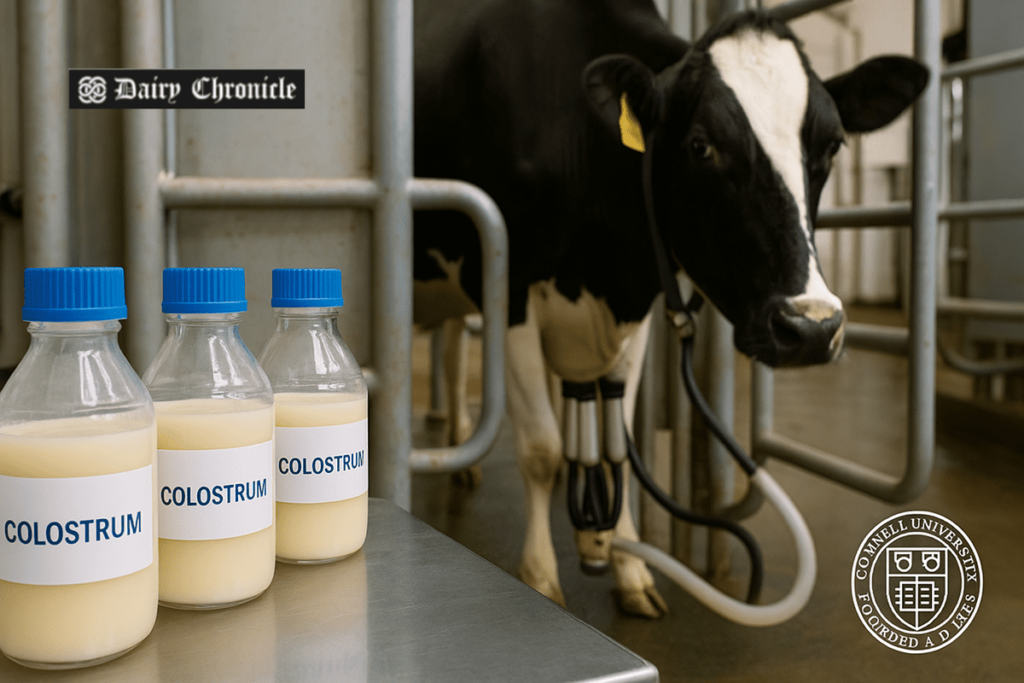Cornell University in New York, United States, has studied the effects of oxytocin on colostrum yield and quality in fresh cows. The research aimed to determine whether administering oxytocin at first milking could enhance the volume or quality of colostrum. While multiparous cows saw little impact, first-calf heifers responded positively to higher oxytocin doses in terms of yield, though oxytocin had no influence on colostrum quality.
Cornell University, a leading research institution known for its work in agriculture and veterinary medicine, has released findings from a new study assessing the potential benefits of oxytocin in dairy cows. Conducted in partnership with a commercial dairy farm housing more than 5,000 cows, the study focused on whether administering oxytocin during first milking could boost colostrum production or enhance its quality.
Colostrum, the first milk produced by cows post-calving, is rich in antibodies and essential for calf immunity. It’s also becoming a potential revenue stream for farms, further raising the interest in increasing both its quantity and quality.
In the study, cows were divided into three groups: one receiving 40 international units (IU) of oxytocin, another with 20 IU, and a control group that received no oxytocin. The hormone was administered intramuscularly about 45 seconds before milking in a rotary parlor. Researchers measured colostrum by weight and analyzed its IgG content using radial immunodiffusion—a method used to determine antibody concentration. Dry matter content was also measured using oven drying techniques.
Key findings from the 636 cows involved—201 of which were first-calf heifers—include:
- Median colostrum yield was 13.2 pounds per cow, ranging from 0 to 45.4 pounds.
- Median IgG concentration across all cows was 98.5 grams per liter.
- First-calf heifers showed a significant response to 40 IU oxytocin, producing 11.9 pounds of colostrum on average—up from 9.0 pounds (20 IU group) and 8.4 pounds (untreated group).
- Multiparous cows (those that had calved before) showed no overall improvement in colostrum yield with oxytocin treatment.
- Certain subsets of multiparous cows did show a positive response to 40 IU of oxytocin. These included:
- Second-lactation cows
- Cows delivering male calves
- Cows with higher milk production in week 4 of lactation
- Cows with a dry period exceeding 65 days
When it came to colostrum quality, oxytocin had no statistically significant effect on IgG concentrations in any group. However, cows in their fourth or later lactations and those with longer dry periods naturally produced colostrum with higher IgG levels.
The study underscores oxytocin’s potential as a targeted tool—particularly beneficial for first-calf heifers adjusting to the stresses of milking for the first time. Cornell researchers emphasized that while oxytocin may support better milk let-down in these animals, it does not universally improve yield or quality for all cows.
These findings contribute to the broader understanding of how management interventions can be optimized for different cow populations within commercial dairy operations.



